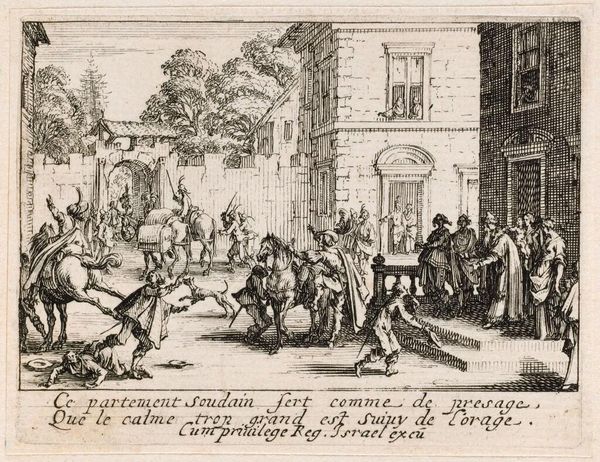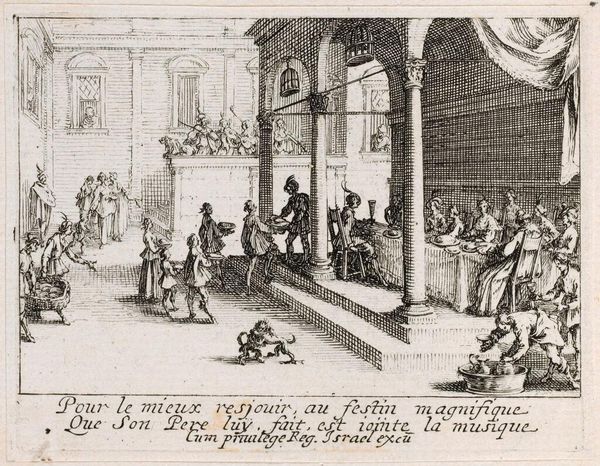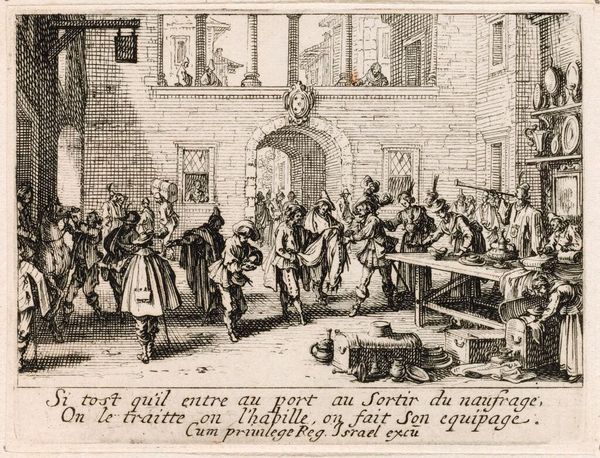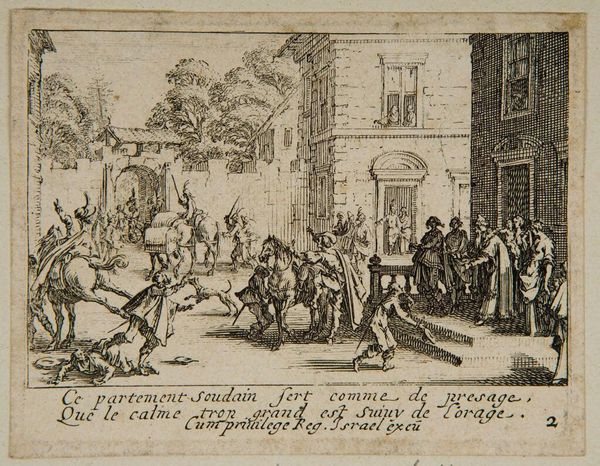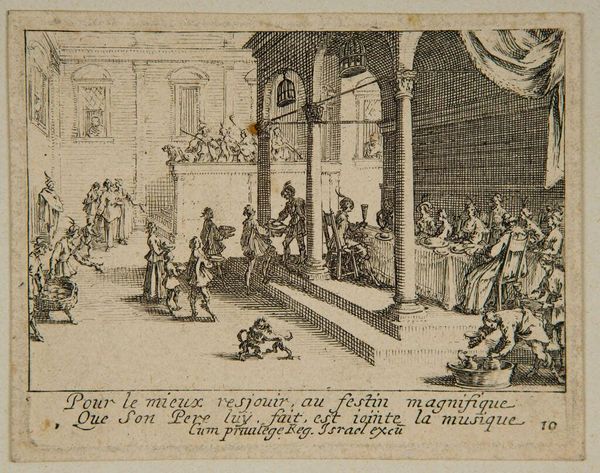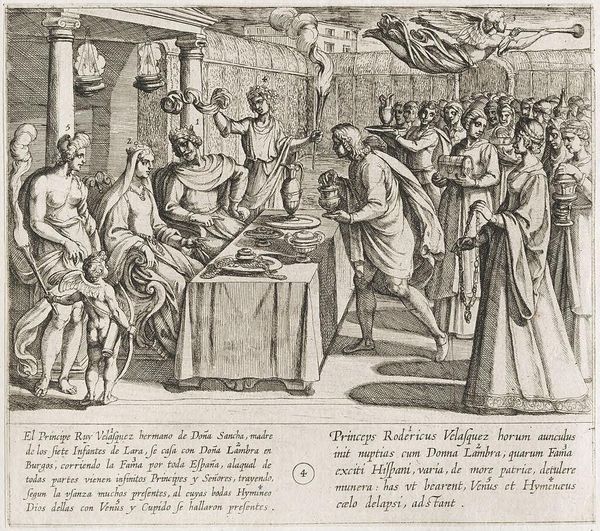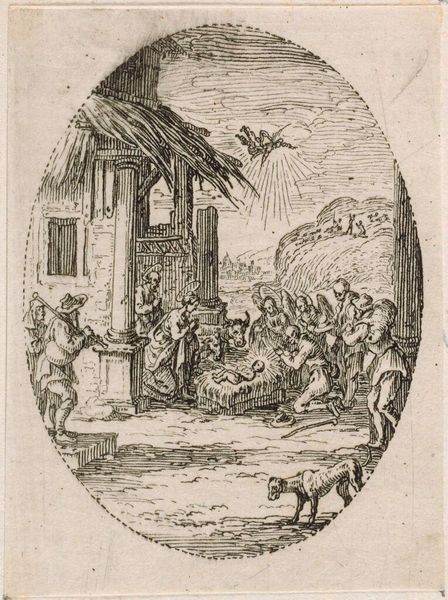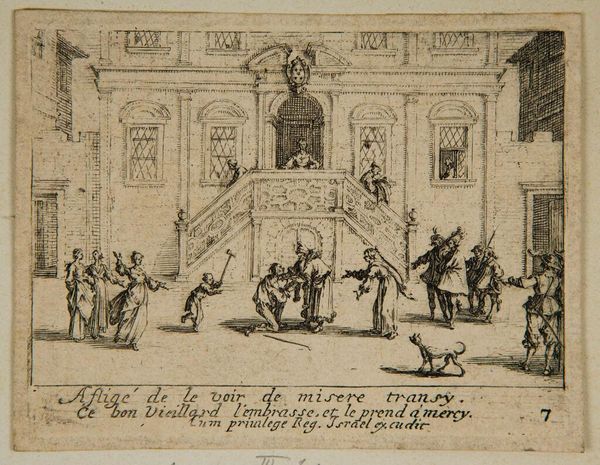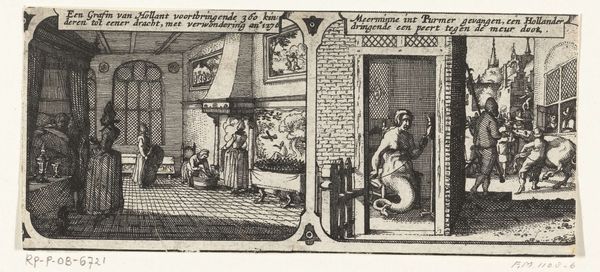
Dimensions: 6.5 x 8.3 cm (2 9/16 x 3 1/4 in.)
Copyright: CC0 1.0
Curator: This is Jacques Callot's etching, "Killing of the Fatted Calf." It's a small work, just a few inches across. Editor: The scene feels bustling, almost chaotic. The composition is dense, packed with figures and animals. Curator: Callot, who lived from 1592 to 1635, meticulously rendered this biblical scene using etching. The lines describe the labor involved in preparing a feast. Editor: Yes, a feast laden with symbolism! The fatted calf, of course, signifies forgiveness and acceptance. The father’s open arms mirrored in the slaughter. Curator: And how Callot highlights the division of labor: some lead the animals, others prepare the meat, and still others observe. It speaks to social hierarchies and communal effort. Editor: The architecture in the background becomes symbolic too, representing hearth, home, community, or even a golden age of prosperity now that the son has returned. Curator: Indeed. Callot's etching presents a fascinating glimpse into 17th-century social dynamics through the lens of a biblical narrative. Editor: It shows how potent symbols, even in mundane labor, can create complex emotional connections.
Comments
No comments
Be the first to comment and join the conversation on the ultimate creative platform.

